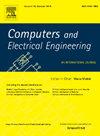利用基于风险的改进网格加密技术进行移动节点验证,实现自适应多因素验证,确保数据传输安全
IF 4
3区 计算机科学
Q1 COMPUTER SCIENCE, HARDWARE & ARCHITECTURE
引用次数: 0
摘要
随着移动服务的迅速普及,保护系统可用性、保密性和完整性的策略应运而生,以满足移动网络的需求。更具体地说,不安全的移动网络更容易受到各种攻击,并干扰合法用户之间的安全数据通信。尽管进行了深入研究,但安全高效的多因素身份验证方案的设计仍然是一个具有挑战性的问题,其结果是安全性差、会话管理不善,并且容易受到新的和增强的攻击。为了解决现有技术面临的挑战,本研究提出了基于风险的改进点阵密码学自适应多因素身份验证(R-mLC-AMf)。这项研究的最终目的在于对移动节点进行身份验证,特别是在由于风险因素而发生交接,甚至重新配置同一网络的情况下。研究中提出的身份验证采用 AMf 机制,该机制借助基于环境因素动态发展的多因素对用户进行身份验证。具体来说,在研究模型中应用改进的晶格加密法对数据进行加密,提高了抵御攻击的安全性,解决了可扩展性问题,并提供了较高的计算效率。此外,在区块链的智能合约中加入委托权益证明(DPoS),不仅能有效保障安全,还具有交易量大、成本低、确认时间快和效率高等优点。仿真结果表明,即使在网络中存在恶意攻击的情况下,所提出的机制也是有效的。最后,性能评估表明,所提出的方法在解密时间、加密时间、真实用户率(GUR)、内存、响应速度和时间复杂度方面都是高效的,分别达到了 1.091 ms、0.895 ms、0.87、131.256 KB、0.343 ms 和 0.497 ms,优于其他最先进的方法。本文章由计算机程序翻译,如有差异,请以英文原文为准。
Mobile node authentication with risk-based modified lattice cryptography enabled adaptive multifactor authentication for secure data transmission
With the rapid proliferation of mobile services, the strategies for protecting the availability, confidentiality, and integrity of systems emerged to meet the demands of mobile networks. More specifically, the insecure mobile networks are more prone to different attacks and interrupt secure data communications between legitimate users. Despite the intensive research, the design of a secure and efficient multi-factor authentication scheme is still a challenging problem that ends with poor security, poor session management, and vulnerability to new and enhanced attacks. In order to tackle the challenges in the existing techniques, Risk-based modified lattice cryptography-enabled adaptive multifactor authentication (R-mLC-AMf) is proposed in the research. The ultimate intention of the research lies in the authentication of mobile nodes specifically in case of handover, or even reconfiguration with the same network that happens due to the risk factors. The proposed authentication in the research is performed with the AMf mechanism that authenticates the user with the help of multi-factors that evolve dynamically based on environmental factors. Specifically, the application of modified lattice cryptography into the research model works in encrypting the data and improves the security against attacks, addresses the scalability issues, and provides high computation efficiency. Further, the incorporation of Delegated Proof of Stake (DPoS) in the smart contract of blockchain addresses effective security purposes and offers the benefits of high transaction volume, low cost, faster confirmation time, and high efficiency. The Simulation results demonstrate that the proposed mechanism is effective even in the presence of malicious attacks in the network.Finally, the performance evaluation demonstrates that the proposed approach is efficient in terms of decryption time, encryption time, Genuine User Rate (GUR), memory, responsiveness, and time complexity that attained 1.091 ms, 0.895 ms, 0.87, 131.256 KB, 0.343 ms, and 0.497 ms respectively outperforming the other state-of-the-art approaches.
求助全文
通过发布文献求助,成功后即可免费获取论文全文。
去求助
来源期刊

Computers & Electrical Engineering
工程技术-工程:电子与电气
CiteScore
9.20
自引率
7.00%
发文量
661
审稿时长
47 days
期刊介绍:
The impact of computers has nowhere been more revolutionary than in electrical engineering. The design, analysis, and operation of electrical and electronic systems are now dominated by computers, a transformation that has been motivated by the natural ease of interface between computers and electrical systems, and the promise of spectacular improvements in speed and efficiency.
Published since 1973, Computers & Electrical Engineering provides rapid publication of topical research into the integration of computer technology and computational techniques with electrical and electronic systems. The journal publishes papers featuring novel implementations of computers and computational techniques in areas like signal and image processing, high-performance computing, parallel processing, and communications. Special attention will be paid to papers describing innovative architectures, algorithms, and software tools.
 求助内容:
求助内容: 应助结果提醒方式:
应助结果提醒方式:


